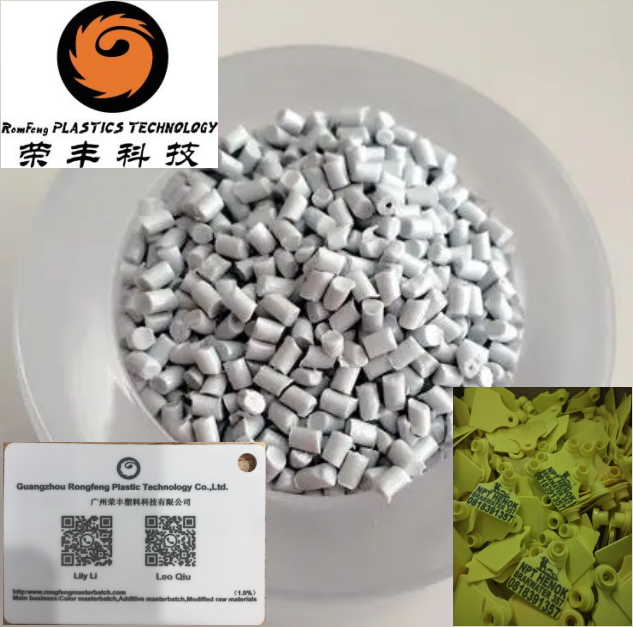Mastering Odor Control in Plastics: The Role of Odor Control Masterbatch
Release time:
2025-06-01 14:40
Source:
Odor control masterbatch is a specialized additive used in the plastic manufacturing process to suppress or eliminate unpleasant odors in finished products. As the demand for high-quality plastic products continues to grow, so does the challenge of managing odors that can result from various materials, additives, or environmental factors. Odor control masterbatches are engineered to be incorporated into the polymer matrix during the production phase, ensuring that the final product is not only functional but also pleasant to use.
The science behind odor control masterbatches lies in their composition. They typically contain a blend of natural and synthetic compounds that interact with odor-causing molecules, neutralizing them or encapsulating them within the polymer structure. This results in a product that retains its original properties while effectively controlling any offensive smells. The incorporation of these masterbatches can significantly improve the user experience, especially in applications where plastic products are in close contact with consumers, such as packaging, household goods, and automotive interiors.
Furthermore, the use of odor control masterbatch is not merely about enhancing sensory perception. It also plays a vital role in product longevity and compliance with health and safety regulations. Many industries are under increasing scrutiny regarding their environmental impact and consumer safety. By utilizing odor control masterbatches, manufacturers can produce safer and more sustainable products, aligning with corporate responsibility goals and regulatory standards.
In addition to improving consumer satisfaction, odor control masterbatch can also enhance product performance. In sectors such as food packaging, where odor transfer can be detrimental, effective odor management can help preserve the product's integrity and flavor. Similarly, in construction materials or automotive applications, reducing odors can contribute to a healthier environment for users.
It is essential for manufacturers to choose the right odor control masterbatch tailored to their specific applications. Factors such as the type of polymer, processing conditions, and intended end-use must be considered to achieve optimal results. Collaborating with suppliers who have expertise in this area can provide valuable insights into selecting the most effective solutions.
In conclusion, odor control masterbatch represents an innovative approach to addressing one of the significant challenges in the plastics industry. By effectively managing unpleasant odors, these masterbatches contribute to enhanced product quality, improved consumer experience, and compliance with health standards. As the industry evolves, the integration of odor control technologies will undoubtedly play a key role in shaping the future of plastic products.
The science behind odor control masterbatches lies in their composition. They typically contain a blend of natural and synthetic compounds that interact with odor-causing molecules, neutralizing them or encapsulating them within the polymer structure. This results in a product that retains its original properties while effectively controlling any offensive smells. The incorporation of these masterbatches can significantly improve the user experience, especially in applications where plastic products are in close contact with consumers, such as packaging, household goods, and automotive interiors.
Furthermore, the use of odor control masterbatch is not merely about enhancing sensory perception. It also plays a vital role in product longevity and compliance with health and safety regulations. Many industries are under increasing scrutiny regarding their environmental impact and consumer safety. By utilizing odor control masterbatches, manufacturers can produce safer and more sustainable products, aligning with corporate responsibility goals and regulatory standards.
In addition to improving consumer satisfaction, odor control masterbatch can also enhance product performance. In sectors such as food packaging, where odor transfer can be detrimental, effective odor management can help preserve the product's integrity and flavor. Similarly, in construction materials or automotive applications, reducing odors can contribute to a healthier environment for users.
It is essential for manufacturers to choose the right odor control masterbatch tailored to their specific applications. Factors such as the type of polymer, processing conditions, and intended end-use must be considered to achieve optimal results. Collaborating with suppliers who have expertise in this area can provide valuable insights into selecting the most effective solutions.
In conclusion, odor control masterbatch represents an innovative approach to addressing one of the significant challenges in the plastics industry. By effectively managing unpleasant odors, these masterbatches contribute to enhanced product quality, improved consumer experience, and compliance with health standards. As the industry evolves, the integration of odor control technologies will undoubtedly play a key role in shaping the future of plastic products.
odor control masterbatch









